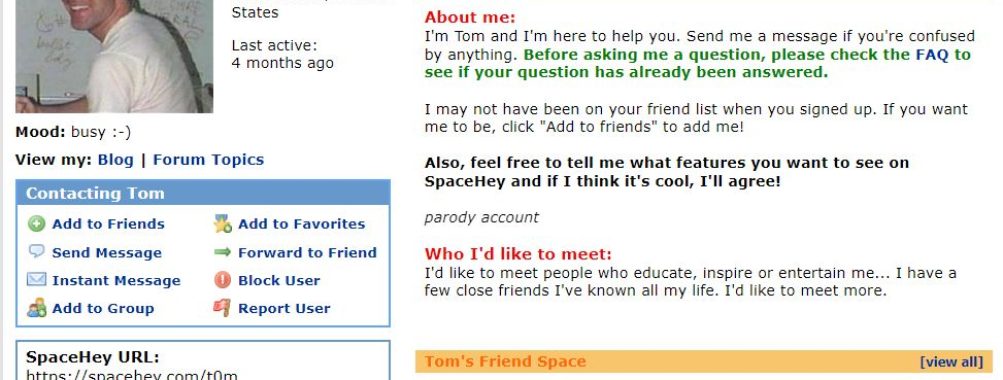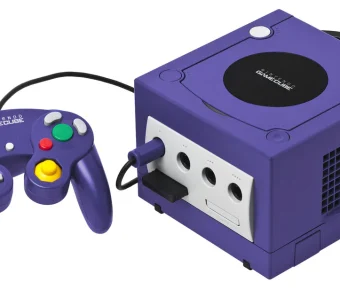
The Rise and Fall of MySpace: A Trip Down Memory Lane
Picture this: It’s late 2005. You come home from school, sit down at the computer, and turn it on. Soon, the screeching wail of dial-up echoes throughout your house. After a grueling couple of minutes staring at the progress bar, Internet Explorer launches. What do you type in the URL bar?
If you were like millions of other Millennials (especially those going through a scene phase), your answer was likely “MySpace.” This was the platform that introduced us to the joys—and dramas—of social media. Today, as we scroll endlessly on TikTok, Bluesky, or Twitter/X, it’s worth looking back at where it all began.
Origins
Launched in January 2004, MySpace gained over 1 million users in its first month. Teens and preteens flocked to this new digital haven, where they were greeted by their first friend: creator Tom Anderson. For many, it was their first taste of social interaction on the internet. By the end of 2006, MySpace had over 5 million users and had firmly cemented itself as the hub for teenage life online.
But what made MySpace stand out from the platforms we know today?
The Good
MySpace was revolutionary for its time. It gave us a connection to the world outside our homes, all while letting us stay safe in our bedrooms. Sure, AIM and Yahoo! Chat existed before, but MySpace felt personal in a way those platforms didn’t. With its customizable profiles, embedded music, Bulletins, and the iconic Top 8, it allowed us to craft a digital identity like never before.
Your MySpace profile wasn’t just a webpage—it was an extension of who you were. We painstakingly learned HTML and CSS to make sure our profiles looked perfect. Whether it was a glittery background, flashing text, or autoplay music, we wanted visitors to know who we were from the second they clicked on our page. The effort we put into customizing our profiles feels almost quaint compared to today’s minimalist Instagram grids and TikTok trends.
And then there was the drama. The Top 8 feature turned friendships into a social hierarchy. Moving someone too high or low on your list could spark arguments at school the next day. Every new message or comment notification sent a jolt of excitement through us. And who could forget the thrill of stalking your crush’s profile, waiting for that “Online Now” icon to pop up?
MySpace wasn’t just a platform—it was a cultural phenomenon. It gave rise to viral moments like Chris Crocker’s infamous “Leave Britney Alone!” video and helped launch the careers of artists like Arctic Monkeys, Adele, and Sean Kingston.
The Bad
While MySpace is remembered fondly, it wasn’t all sunshine and glittery profile themes.
The lack of anonymity on MySpace meant that everything you posted was tied to your identity—something we take for granted today but was entirely new back then. The news media often used MySpace profiles and photos in their stories, teaching us early on that nothing online is truly private.
The platform also became a breeding ground for cyberbullying and catfishing. Tragically, in 2006, Megan Meier, a teenager, took her own life after being the victim of cyberbullying on MySpace. It was one of the first high-profile cases to show the darker side of social media.
Spam and phishing links were another issue. MySpace profiles were often cluttered with ads and malicious links, making the experience frustrating at times. Compared to today’s streamlined platforms, MySpace’s chaotic interface feels almost comical in hindsight.
MySpace Now
Over the years, MySpace has transformed into something entirely different. After being overtaken by Facebook in 2008, MySpace shifted its focus to music and entertainment. Today, it serves as a niche platform for artists, musicians, and creators to share and discover content.
Gone are the glittery profiles and Top 8 drama. Instead, MySpace now boasts a sleek, modern interface. While it still exists, it’s a far cry from the cultural juggernaut it once was.
A New Online Era
As platforms like TikTok, Bluesky, and Twitter/X dominate our online lives, it’s easy to forget the role MySpace played in shaping social media as we know it. It was the first platform to teach us how to curate a digital identity, the joys of connecting with friends online, and, unfortunately, the consequences of oversharing.
Unlike MySpace, today’s platforms emphasize algorithms, ad revenue, and virality. The personal touch of MySpace has been replaced with polished influencer brands and endless scrolling. But for those of us who lived through the MySpace era, it will always hold a special place in our hearts.
Now, if only Bluesky or Facebook would let us bring back customizable profile themes…

